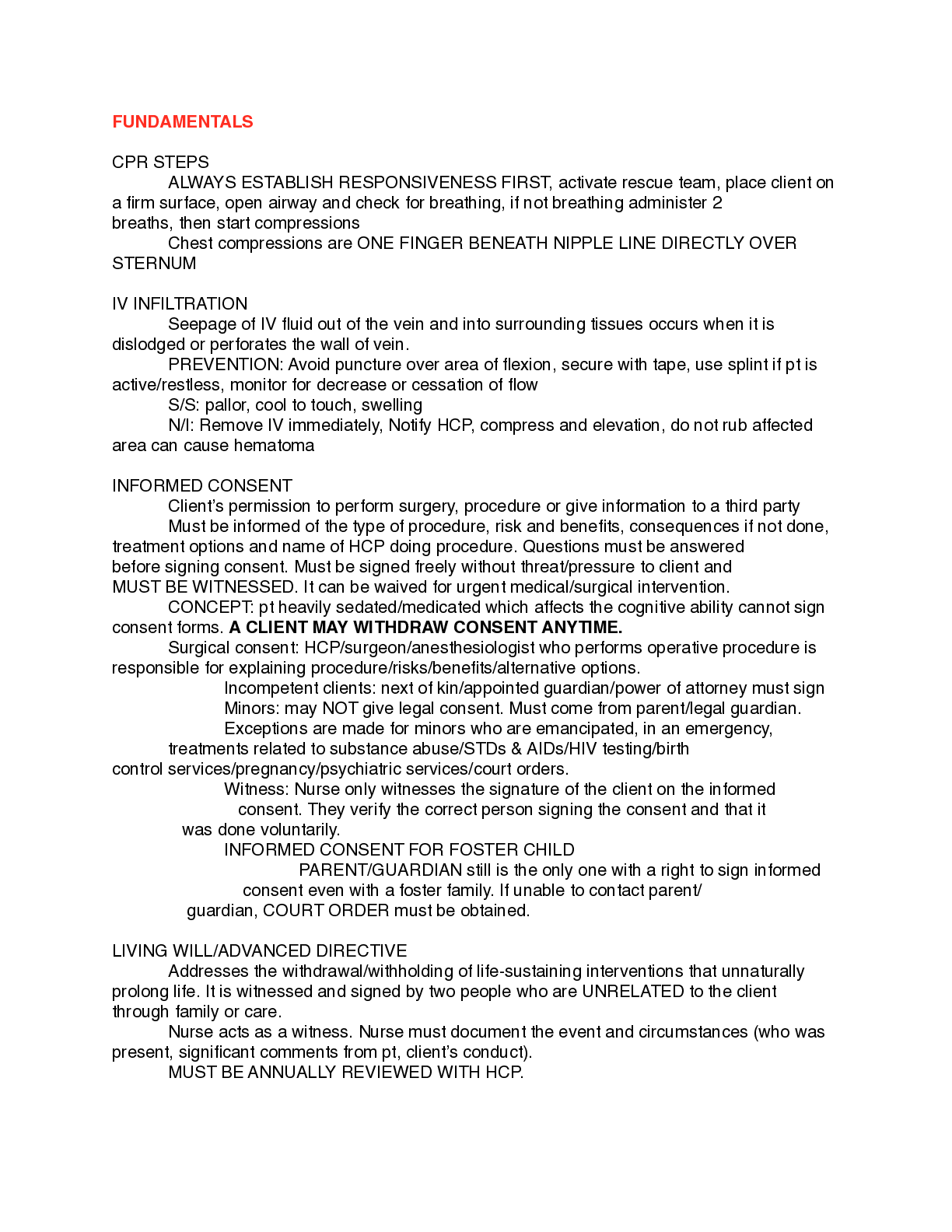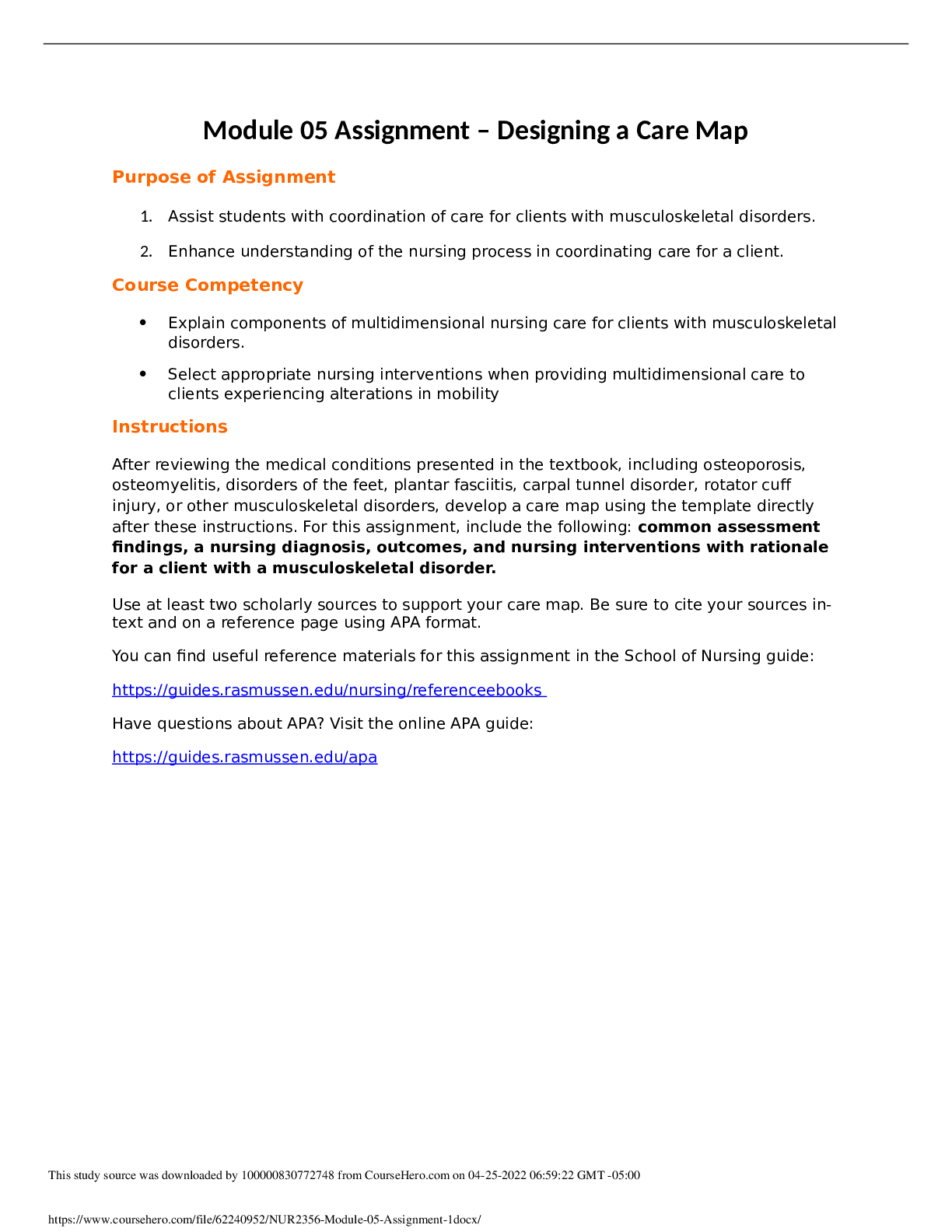*NURSING > STUDY GUIDE > NR603 Week 1 Compare and Contrast DB_Migraine Headache and Tension Headache 2021 Edition(Graded A+) (All)
NR603 Week 1 Compare and Contrast DB_Migraine Headache and Tension Headache 2021 Edition(Graded A+)
Document Content and Description Below
Walker- Migraine Headache and Tension Headache Week 1 Part 1: You will research the two areas of content assigned to you and compare and contrast them in discussion post. NOTE: A comparison and co... ntrast assignment is not about listing the info regarding each disease separately but rather looking at each disease side by side and discussing the similarities and differences given the categories below. Consider how each patient would actually present to the office. Consider how their history would affect their diagnosis, etc. Evaluation of mastery is focused on the student's ability to demonstrate specific understanding of how the diagnoses differ and relate to one another. Address the following topics below in your own words: Presentation Pathophysiology Assessment Diagnosis Treatment Dr. Ameri and class, Walker- Migraines and Tension headaches Presentation: Migraines in adults are of moderate to severe intensity, unilateral, and described as a throbbing or pulsating sensation. The patient may complain of nausea, vomiting, an aura, and sensitivity to light, noise, and/or smells. The patient may feel foggy after a migraine (Moriarty & MallickSearle, 2016). Tension-type headaches is the common headache and usually doesn’t require seeking medical attention. Tension-type headaches are of mild to moderate pain intensity, bilateral, described as dull pain or pressure, and do not throb. These patients may suffer from less than 15 headaches per month and they may last anywhere from 30 minutes to 7 days. Tension-type headaches are not aggravated by physical activity unlike migraines. Patients with tension-type headaches won’t have symptoms of nausea or vomiting. Tension-type headaches may cause a sensitivity to light or noise but not both (Rizzoli & Mullally, 2018). In all reality, migraines are associated with more severe pain, may be debilitating, and may require medical management to improve quality of life (Moriarty & Mallick-Searle, 2016). Pathophysiology: Migraines are a multi-factorial, recurrent, and hereditary headache disorder. Migraines may have prodromes or auras that exhibit several hours before the migraine occurs (Burstein, Noseda, & Borsook, 2015). Auras are correlated to four different aspects of the brain: hypothalamus, brainstem, cortex, or limbic system. It is believed that migraines begin in areas of the brain capable of initiating an aura, but [Show More]
Last updated: 2 years ago
Preview 1 out of 5 pages

Buy this document to get the full access instantly
Instant Download Access after purchase
Buy NowInstant download
We Accept:

Reviews( 0 )
$9.00
Can't find what you want? Try our AI powered Search
Document information
Connected school, study & course
About the document
Uploaded On
Jul 26, 2021
Number of pages
5
Written in
Additional information
This document has been written for:
Uploaded
Jul 26, 2021
Downloads
0
Views
87

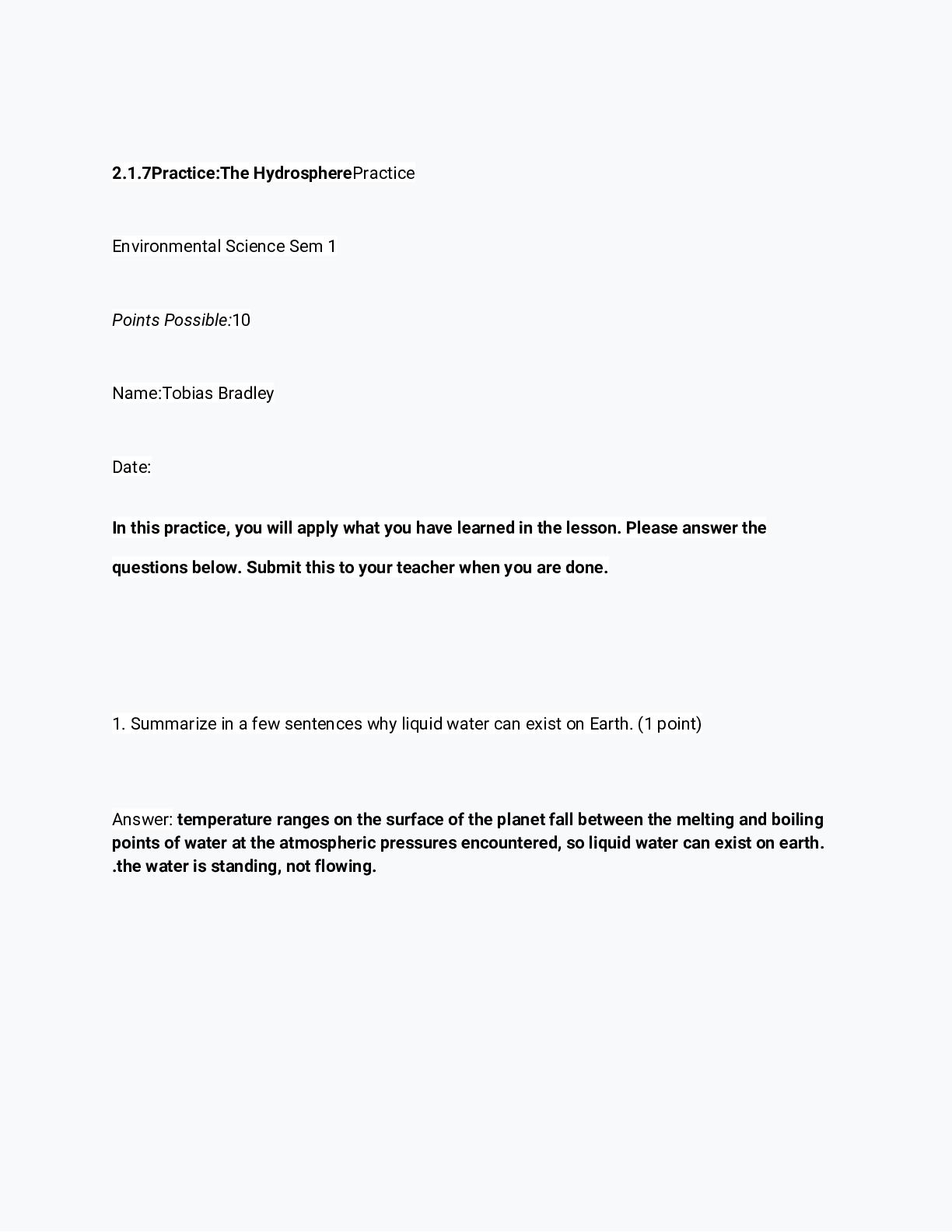
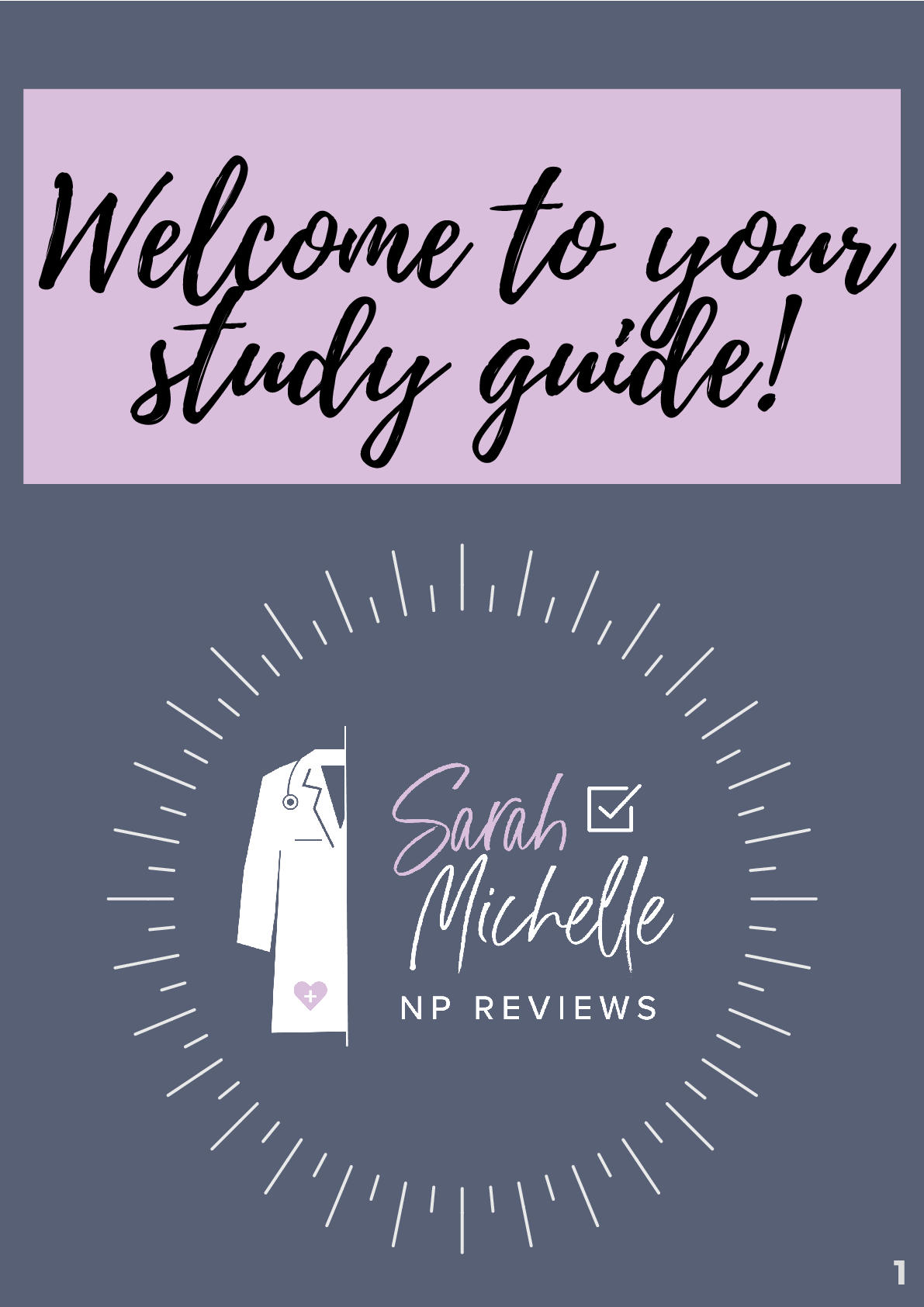



.png)
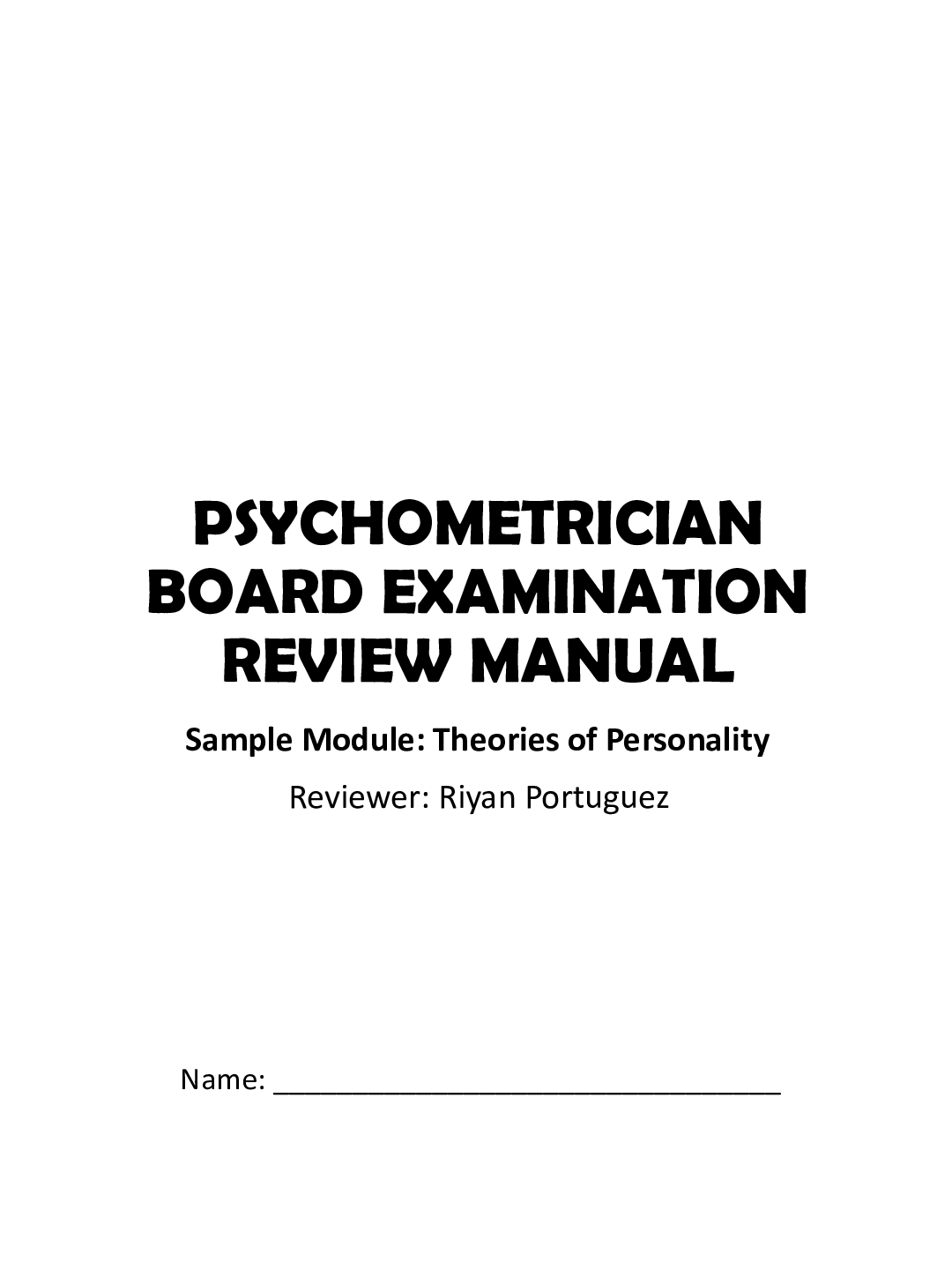
.png)

